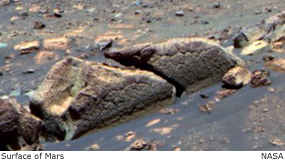Schedule
|
Date
|
Speaker
|
Topic
|
8/31
|
John Scalo
|
Organizational Meeting
|
9/14
|
Paul Bradley
Los Alamos
|
X Division Overview
|
9/28
|
Anita Cochran
|
Early Results from the Deep Impact Mission
|
10/12
|
John Scalo
|
Solar Flare Radiation Risk for Organisms on Mars and
Humans on the Moon
|
10/19
|
Yasushi Suto
Tokyo University
|
High-resolution Spectroscopic Observations of the
Transiting Extrasolar Planet HD209458b
|
10/26
|
Jacob Bean
|
The Extrasolar Planet - Metallicity Connection
|
11/9
|
Mike Endl
|
Direct Observations of Extrasolar Planets
|
11/16
|
Lucas Cieza
|
Structure and Evolution of Circumstellar Disks: A
View with Spitzer
|
11/23
|
None Scheduled
|
Cancelled for Thanksgiving Holidays
|
11/30
|
Nairn Baliber
Phd Thesis Defense Talk
|
A Photometric Search for Transiting Planets
3:00 PM
|
12/7
|
Tom Geballe
Gemini Observatory
|
Three Microns Spectroscopy of Titan's HCN,
Hydrocarbons and Haze
Moderate and high resolution spectra of Titan in the
2.9-3.5um interval reveal a range of atmospheric
emission and absorption features from molecules over a
wide range of altitudes. Using spectra derived from
model atmospheres we have analyzed Titan's spectrum in
order to investigate the mixing ratios of CH4, CH3D,
C2H2, and HCN and constrain the locations of reflecting
and absorbing haze and cloud layers. In particular, we
find that HCN, whose lines are in strong emission, is
abundant in the upper atmosphere and mesosphere. Cloud
decks at altitudes of ~10 mbar and ~100 mbar, and a
stratospheric haze layer are required to explain the
wavelength dependence of the continuum as well as the
depths and widths of the detected absorption lines of
CH4 and CH3D. Analysis of the lines from the latter
species clearly demonstrates that the clouds and haze
are semi-transparent at 2.9um and that the surface of
Titan is glimpsed there.
|

